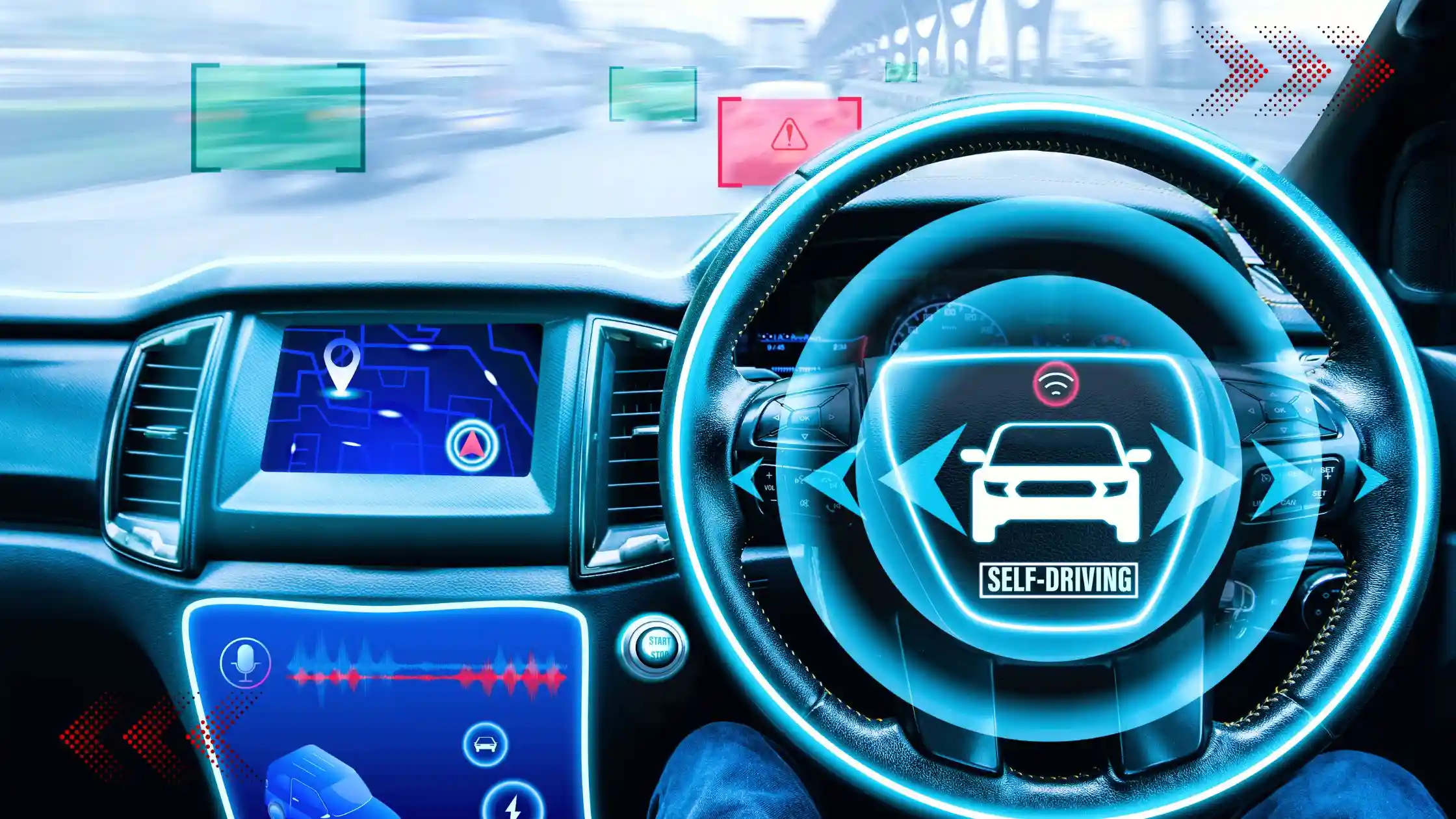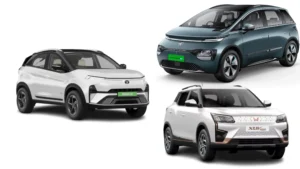Car Sensors: In times automobiles have grown increasingly intricate due, to the emergence of parts, such, as sensors. Nowadays contemporary cars come equipped with a range of sensors that oversee aspects of the vehicle and interact with both the driver and the ECU (Electronic Control Unit). Let us delve into the types of car sensors and their respective functions.
How Do Car Sensors Work?
A car sensor serves as a tool that keeps track of aspects of the vehicle and transmits information to either the driver or the Electronic Control Unit (ECU). In situations, based on the sensor’s information the ECU may automatically adjust components. Here are more details, about how car sensors function.
- Car sensors can monitor aspects such as temperature, coolant system, engine performance, oil pressure, emission levels and vehicle speed.
- They operate in a way to our human sense organs (eyes, nose, mouth, tongue, hands) which receive signals and send them to the brain for decision-making.
- Likewise, automotive car sensors function by sending signals to the ECU so that it can make adjustments, to the engine or alert the driver when needed.
- These sensors continuously monitor the functions of a car once its engine is started.
The Functions Of Automotive Car Sensors
Automotive car sensors have become a part of today’s vehicles with their presence spanning across components from the engine, to even the most minor electrical parts. Their primary purpose is to provide data to the car’s control systems playing a role in monitoring and analyzing key performance factors like speed, temperature, pressure and other vital variables.
One of the functions of these sensors is to enhance safety on the road. For instance, wheel sensors are utilised by the anti-lock braking system (ABS) to constantly monitor the rotational speed of each wheel. In case a wheel ceases rotation while the vehicle is in motion the ABS automatically reduces brake pressure to prevent skidding and enable the driver to maintain control. Furthermore, sensors also play a role in detecting changes in speed for timely airbag deployment during collisions ensuring occupant protection.
Apart from safety improvements sensors also contribute significantly towards enhancing fuel efficiency. Sensors, like oxygen sensors fuel pressure sensors and mass air flow sensors collaborate to optimize the car’s fuel delivery system and ensure engine performance.
By monitoring the mixture of fuel and air the sensors can optimize the flow of fuel to maximize combustion efficiency. This in turn helps to decrease both fuel consumption and emissions. Sensors have a role to play in improving a car’s performance, safety and efficiency.
Types of Car Sensors
| Sensor Types | Functions |
|---|---|
| Air-Flow Sensor | During combustion, it measures the air density and volume. |
| Engine Knock Sensor | This sensor monitors engine knocking and ensures the right mixture of air and fuel is ignited. |
| Engine Speed Sensor | Crankshaft speed and position are monitored by it. |
| Camshaft Position Sensor | Monitoring the camshaft’s position and timing. |
| Map (Manifold Absolute Pressure) Sensor | NOx levels in the exhaust are measured by it. |
| Throttle Position Sensor | Keep an eye on the throttle valve’s position. |
| Voltage Sensor | During idling, it regulates the vehicle’s speed. |
| Oxygen Sensor | Exhaust gas oxygen levels are measured by this sensor. |
| Nox Sensor | NOx levels in exhaust are measured by it. |
| Temperature Sensor | Temperature monitoring is carried out by it. |
| Fuel Temperature Sensor | The engine’s fuel temperature is monitored by it. |
| Speed Sensor | Wheel speed is measured by it. |
| Parking Sensor | Any obstacle present on the vehicle’s front or rear is detected by it. |
| Rain Sensor | Once it detects rain it sends a signal to notify the Electronic Control Unit (ECU) to initiate wiper activation. |
1. The Air-Flow Sensor
- The airflow sensor plays a role, in measuring the amount and density of air that enters the engine.
- This essential component is situated within the combustion chamber.
- Plays a role in ensuring that the right amount of mixture enters for optimal performance.
- If the airflow sensor malfunctions it can lead to engine stalling or increased fuel consumption.
2. The Engine Knock Sensor
- In an engine knock sensors are responsible for detecting any combustion of the air-fuel mixture commonly referred to as knocking.
- Such knocking phenomena can negatively impact engine efficiency.
- Potentially cause damage, to its components over time.
- By monitoring the ignition process of the air-fuel mixture this sensor alerts the driver if any issues arise with its ignition.
3. The Engine Speed Sensor
- The sensor in question effectively monitors both the speed and position of the crankshaft.
- To determine the position of the crankshaft dedicated sensors are installed on it. These sensors then relay this information to the engine control unit.
- When the engine control unit calculates the timing, for fuel injection it activates a spark plug.
- The engine loses efficiency if the timing is incorrect.
4. The Camshaft Position Sensor
- Engine camshafts have the responsibility of regulating when intake and exhaust valves open and close, during operation.
- To maintain the timing of the camshaft camshaft position sensors play a role.
- They ensure that air enters the cylinder and burnt gases are released at the right moment.
- Incorrect timing can result in damage, to the cylinder ultimately impacting the engine’s power output.
5. The Manifold Absolute Pressure (Map) Sensor
- The engine load is monitored by this sensor.
- Calculates the difference between the manifold and outside pressure.
- Based on the change in pressure, the MAP sensor ensures the engine relieves fuel.
- Fuel consumption may increase if the MAP sensor fails.
6. The Throttle Position Sensor
- The throttle valve gets adjusted when you press down on the accelerator pedal.
- These sensors calculate and send data to the Engine Control Unit (ECU) to determine air-fuel mixture.
- A faulty throttle position sensor can cause issues, with power delivery.
7. The Voltage Sensor
- Voltage sensors manage the vehicle’s idling speed
- Depending on the situation, the sensor can also reduce or increase idling speed.
8. The Oxygen Sensor
- It measures the oxygen levels in the exhaust gases.
- Typically you can find the O2 sensor positioned near the exhaust manifold and after the converter.
- A sensor measures how rich or lean the air-fuel mixture is in an engine.
- The oxygen sensor can cause high fuel consumption, jerkiness, or idling speed problems.
9. The Nox Sensor
- Oxides of Nitrogen (NOx) present in exhaust gases are monitored by the NOx sensor.
- NOx emissions from vehicles are regulated by strict laws.
- To monitor the emission of harmful gases, the NOx sensor is essential.
- ECUs adjust the air-fuel mixture based on the NOx levels determined by the sensor.
10. The Temperature Sensor
- The sensor monitors the engine temperature.
- A vehicle’s thermal management is crucial to its smooth operation. As a result, it is an important sensor in a car.
- The sensor contributes to the efficient operation of the cooling system as well.
- Additionally, the sensor can alert the diver to low coolant or a malfunctioning engine.
11. The Fuel Temperature Sensor
- To maintain fuel usage this sensor continuously. Adjusts the fuel temperature.
- During temperatures fuel combustion occurs at a rate where warmer temperatures lead to faster combustion.
- By delivering fuel to the cylinder at a temperature this sensor ensures that the engine operates smoothly.
12. The Speed Sensor
- It measures the speed of the car as its name suggests.
- Off-roading or going around corners can cause a car’s wheels to travel at different speeds.
- Thus, the speed sensor tracks each wheel’s speed.
- As the data is sent to the ECU, it can be utilised by safety features like traction control and ABS.
- 4×4 vehicles must have a speed sensor.
13. The Parking sensor
- The sensor detects any obstacles in front of or behind the vehicle.
- A beeping sound alerts the driver. The beeping gets louder as the distance gets closer.
- Drivers can park safely with it.
- High-end luxury vehicles utilize sensor data, for emergency braking purposes.
- This means that if the car gets too close, to an obstacle the brakes are automatically applied.
14. The Rain sensor
- The sensor detects rain.
- Typically these sensors are positioned on the windscreen. When they detect raindrops they send a signal to the Electronic Control Unit (ECU).
- In vehicles equipped with wipers, the ECU then activates them accordingly. Therefore when it starts raining the rain sensor triggers the activation of wipers.
Also read: Sedan vs SUV: Which one fits your lifestyle?
Advantages And Disadvantages Of Car Sensors
The following are some of the advantages of car sensors;
- Driving is made easier by car sensors. A vehicle’s sensors can easily detect faulty components.
- A sensor ensures that the engine is maintained properly.
- The sensors also serve the purpose of managing functions, like the windshield wipers and headlights among others.
- Sensor data allows the ECU to make precise adjustments.
- The sensors can also alert the driver when any of the components of the vehicle are malfunctioning or faulty.
The following are some disadvantages of car sensors;
- The number of sensors on board can lead to sensor failure over time, which is one major disadvantage.
- Vehicle components can be damaged by a faulty sensor.
- Repairing or replacing these sensors can be quite expensive.
To ensure the performance of your vehicle and prevent any problems related to sensors it is important to regularly inspect and maintain the various types of sensors in your car. These sensors work together each, with its role to monitor and regulate systems and components ensuring that your vehicle operates safely and efficiently.
FAQs on Car Sensor
What Kinds Of Sensors Are Found In Cars?
Sensors play a role, in cars as they collect and transmit data for the vehicle to operate smoothly and securely. They continuously monitor parameters like speed, temperature, pressure and proximity to ensure functioning.
Can A Car Run Without Sensors?
Technically, a car can run without certain sensors, but these sensors may affect performance, efficiency, and safety features, affecting its overall operation.
Does Every Car Have Sensors?
These sensors can be found in car models such, as hatchbacks and SUVs (Sport Utility Vehicles).









